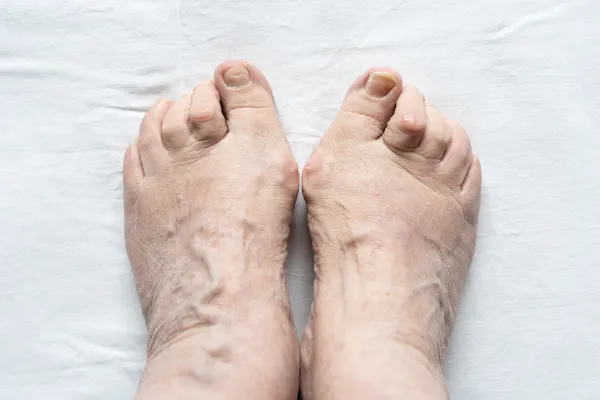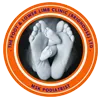
When Toes Overlap or Cross: What’s Going On and What Can Help
Have you noticed one of your toes drifting on top of another? Or maybe your pinky toe seems to curl underneath the others? You’re not alone—and there are things we can do to help.
Why Do Toes Overlap or Cross?
When toes don’t stay in their usual straight line, it’s often because of one or more of the following:
Muscle imbalance – The tiny muscles and tendons in your feet aren’t working together like they should.
Footwear – Narrow, tight, or pointy shoes can squash your toes over time.
Genetics – Sometimes, it simply runs in the family.
Bunions or hammertoes – These common conditions can push the other toes out of place.
Injury or arthritis – Past trauma or joint wear and tear can lead to changes in how your toes sit.
Over time, overlapping toes can cause rubbing, blisters, hard skin (callus), pain, and even difficulty finding comfy shoes.
What Can Be Done About It?
Good news—there’s help available. And no, it doesn’t always mean surgery.
At The Foot & Lower Limb Clinic, we help people every day who are struggling with toe problems like this. Here’s how we typically approach it:
1. Footwear Check
We’ll take a look at your shoes first. If they’re too tight or the wrong shape for your feet, switching to something more supportive and roomy can make a big difference.
2. Padding & Separators
Soft toe spacers, pads, or custom cushioning can relieve rubbing and help gently realign the toes.
3. Strengthening & Stretching
We might show you some simple exercises to strengthen the small muscles in your feet and improve toe positioning.
4. Orthotics
Custom insoles can correct any underlying foot imbalance and take pressure off the affected toes.
5. Advanced Options
If things have become more severe or painful, there are more advanced treatments available, including minor surgical procedures to correct toe position.
When Should You Get Help?
If your toes are overlapping and:
You’re in pain
You’re getting blisters, corns or calluses
It’s getting harder to walk or wear shoes comfortably
…then it’s time to pop in for a proper assessment.
You're Not Alone
I still remember one patient—a keen walker—who had struggled with overlapping toes for years. It started off small, but over time, it made even short walks uncomfortable. With the right mix of footwear advice, toe spacers, and custom orthotics, she’s now back to walking around Pendle Hill without a second thought.
We love seeing those kinds of turnarounds. You don’t have to put up with foot pain or “just live with it.”
Final Thought
Overlapping or crossing toes aren’t just a cosmetic issue—they can really affect your comfort and quality of life. But the good news is, help is available, and treatment often starts with something as simple as the right shoes or a bit of support under your feet.
If you’re not sure what’s going on with your toes, we’re here to help you figure it out.


